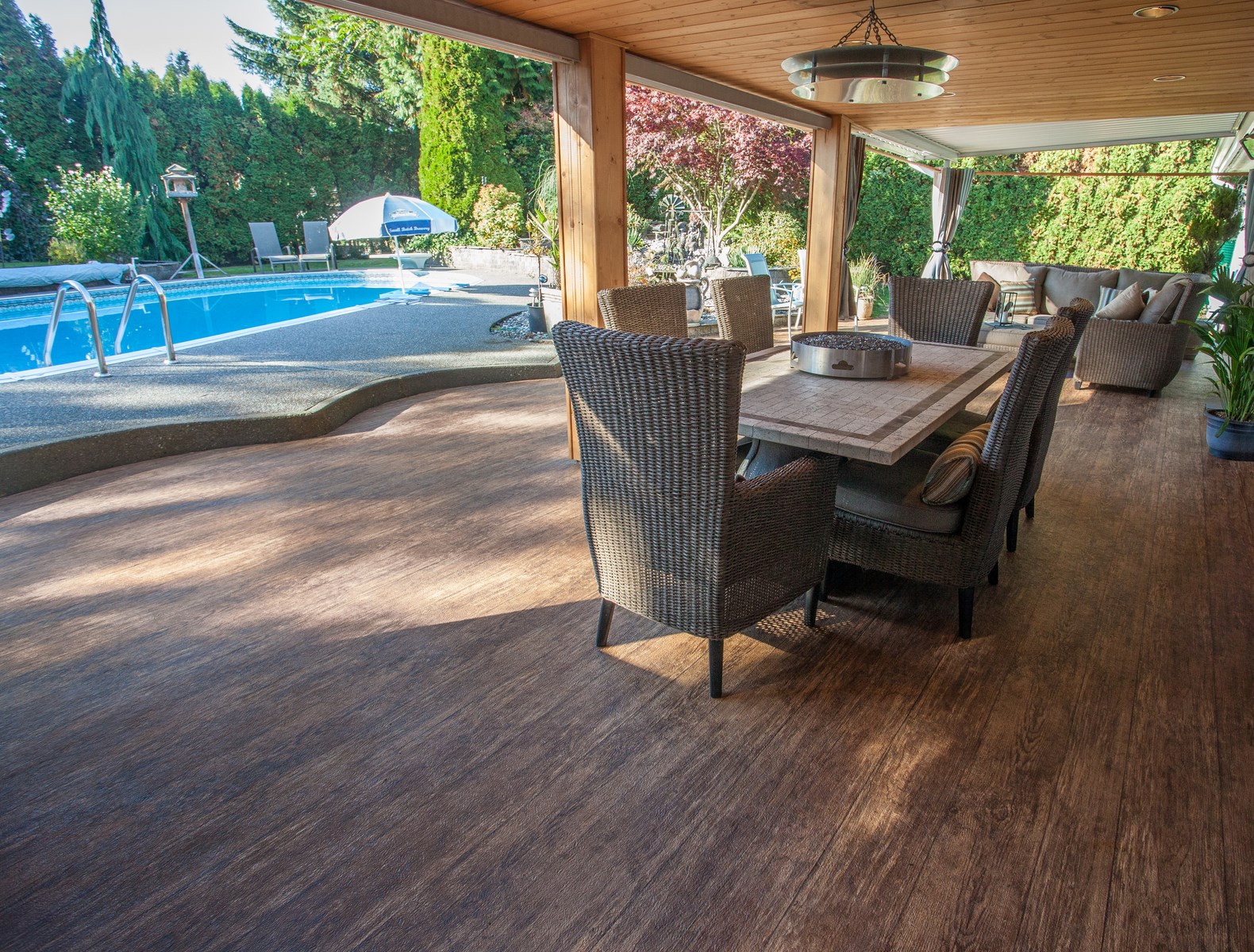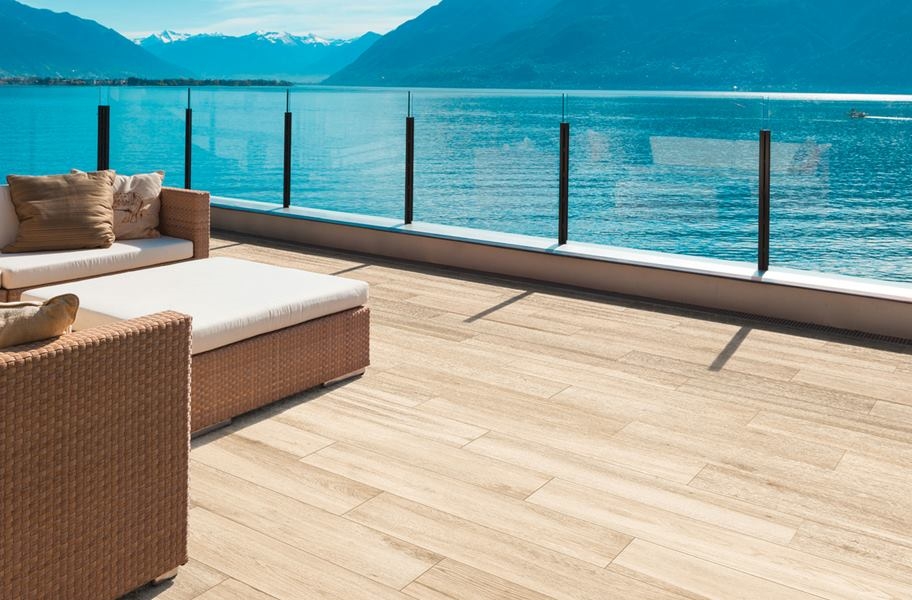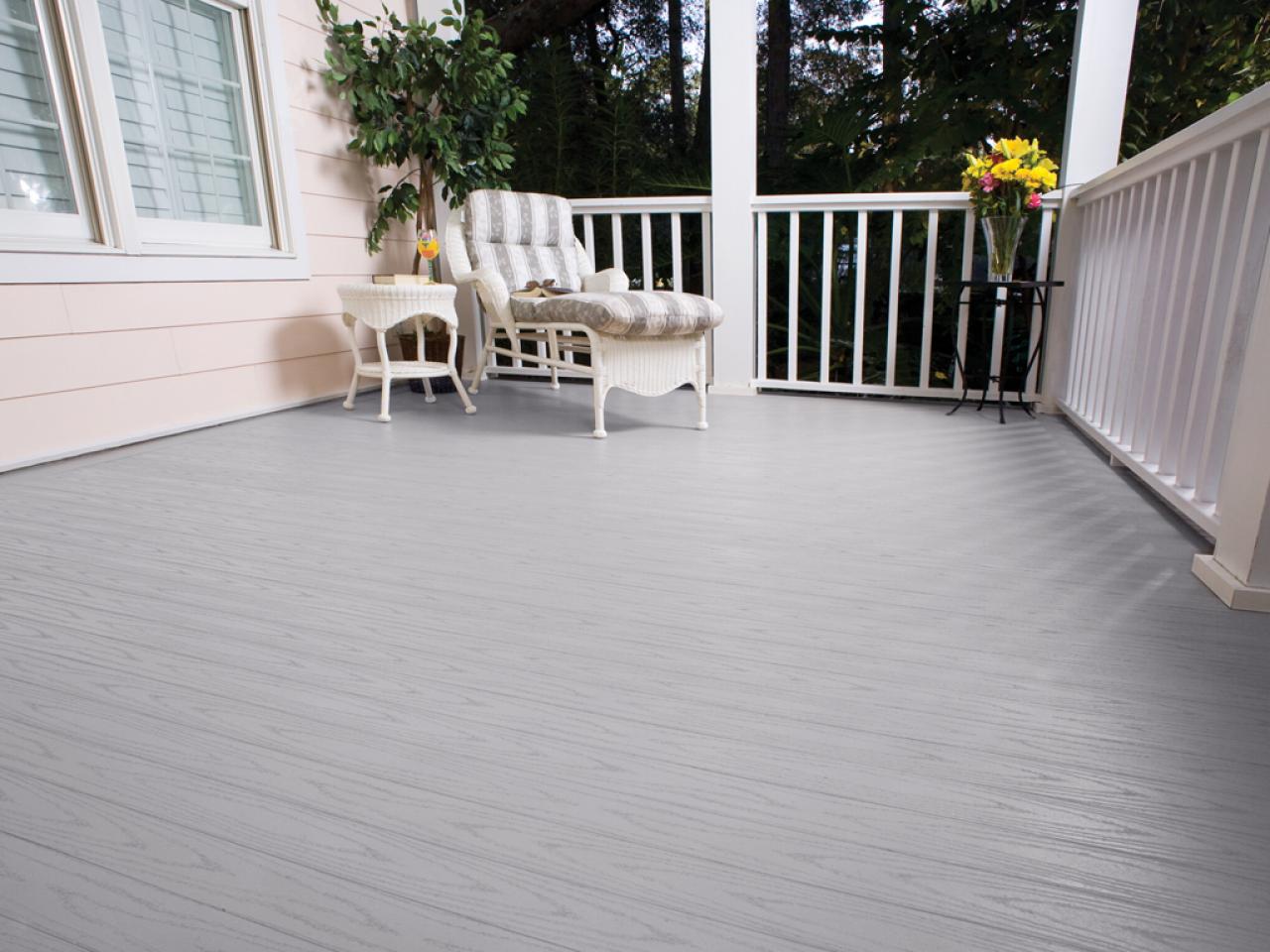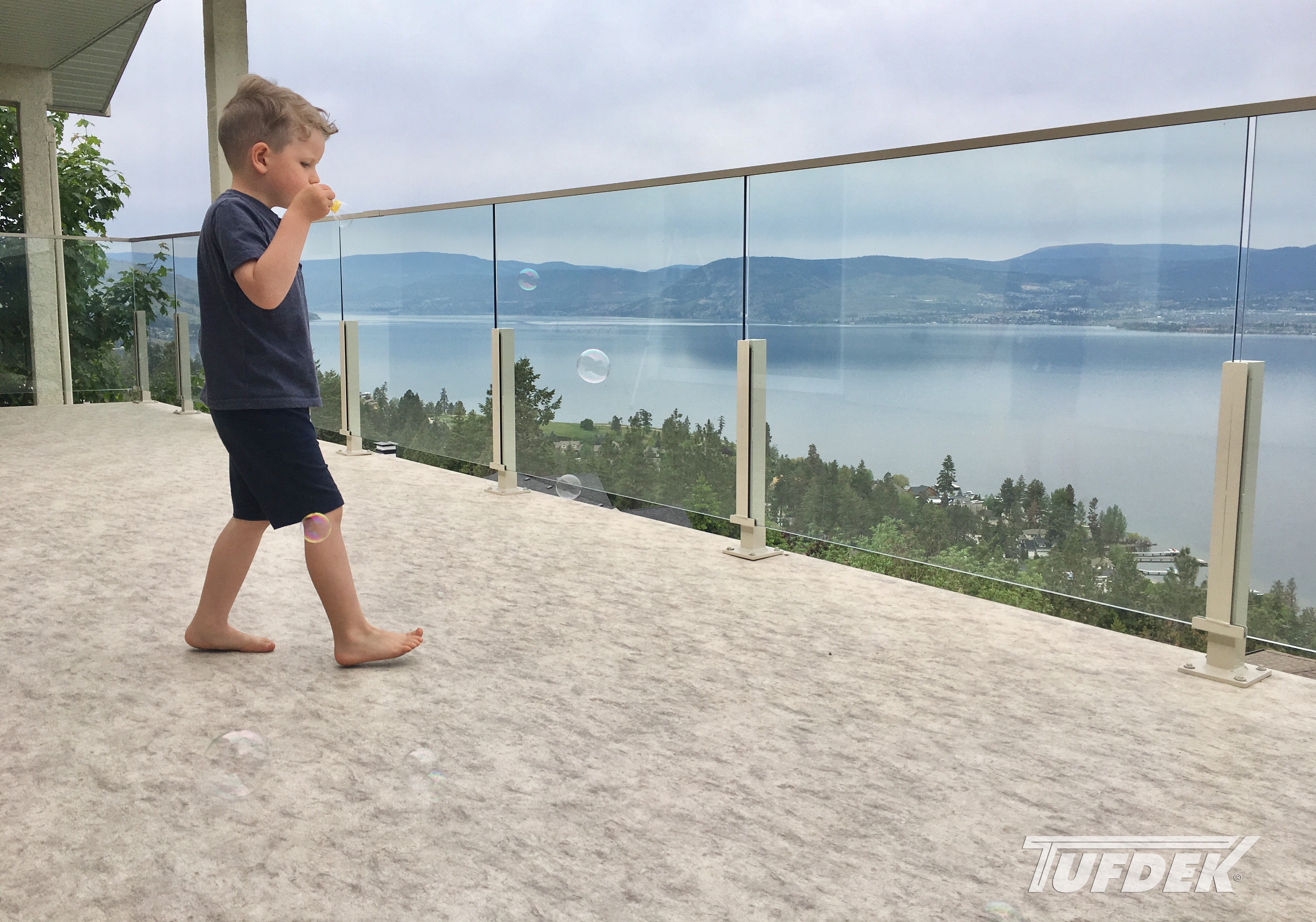What Makes Vinyl Flooring Ideal for Outdoor Patios?
When I was exploring options for my patio, I wanted something that could stand up to the elements and still look fantastic. Vinyl flooring quickly became the obvious choice. Here’s why I think it’s an excellent option for outdoor patios:
- Weather Resistance: One of the first things that attracted me to vinyl flooring is its resistance to all sorts of weather conditions. Whether it’s intense sunlight, rain, or even snow, vinyl can handle it without warping or fading.
- Durability: Outdoor patios tend to get a lot of use, from backyard barbecues to family gatherings. Vinyl is designed to endure heavy foot traffic and withstand wear and tear, so it holds up beautifully over time.
- Waterproof: Vinyl flooring is inherently waterproof, which is a huge advantage for outdoor settings. There’s no worry about water seeping into the material and causing damage, unlike wood or certain tiles.
- Easy Maintenance: Cleaning vinyl is a breeze. A quick sweep or mop is all it takes to keep it looking new. This makes it an ideal choice for an outdoor space where dirt, leaves, and spills are inevitable.
- Variety of Designs: The design options with vinyl are endless. You can get it in a range of styles, from wood-look planks to stone-like textures, allowing you to create the exact aesthetic you want for your patio.
- Cost-Effective: Vinyl is a budget-friendly option compared to natural stone or wood. For me, it offered the perfect blend of affordability and performance, without sacrificing style.

The Different Types of Vinyl Flooring for Patios
Before diving into a purchase, I realized there are different types of vinyl flooring to choose from for patios. Each type has its pros and cons, and it’s essential to know what will work best for your space.
Luxury Vinyl Planks (LVP)
LVP mimics the look of hardwood planks and offers a textured, natural feel. It’s thicker than standard vinyl and incredibly durable, which makes it a popular choice for outdoor use.
Luxury Vinyl Tiles (LVT)
LVT offers the appearance of ceramic or stone tiles but with the added benefits of vinyl. They’re softer underfoot, and installation is easier. I liked LVT for areas where I wanted a more high-end, stone-like look.
Sheet Vinyl
Sheet vinyl is sold in rolls and installed in large sections, reducing the number of seams. It’s a great budget option, though it may not offer the same visual appeal as LVP or LVT.
Rigid Core Vinyl
Rigid core vinyl is a newer option that includes a dense, sturdy backing layer. It’s more stable under fluctuating temperatures, which makes it ideal for patios that experience a lot of direct sun exposure.
Waterproof Vinyl Flooring (WPC and SPC)
WPC (Wood Plastic Composite) and SPC (Stone Plastic Composite) are engineered for high moisture areas. These options offer the highest level of water resistance, perfect for a patio exposed to the elements.
Click-Lock Vinyl Flooring
This type of vinyl features a click-lock installation system, which makes it a DIY-friendly option. It’s available in both LVP and LVT styles, so you can get the look you want with an easy install.
How to Choose the Best Vinyl Flooring for Your Patio
Choosing the right vinyl flooring for your patio can feel overwhelming with so many options available. I learned a few key factors that helped me narrow down my choices.
Consider the Climate
If you live in an area with extreme weather, be it heat or cold, you’ll want to choose vinyl that can handle temperature fluctuations without cracking or warping.
Foot Traffic and Usage
How often do you use your patio? If it’s a frequently used space, opt for thicker, more durable vinyl like LVP or LVT, which can handle heavy foot traffic without wearing out quickly.
Water Exposure
Patios that are uncovered or near a pool need extra water resistance. Waterproof vinyl, like WPC or SPC, would be your best bet for areas that are regularly exposed to water.
Design Aesthetic
Think about the style of your home and outdoor space. If you want your patio to have a wood-like appearance, LVP will give you that authentic look. For a sleek, modern vibe, LVT with a stone or tile finish is an excellent option.
Installation Method
Some vinyl options are easier to install than others. If you’re planning on doing the work yourself, consider click-lock vinyl, which is simple to install and doesn’t require adhesive.
Budget
Price is always a consideration. LVP and LVT can be more expensive than sheet vinyl, but they also offer better durability and design. It’s essential to weigh the long-term benefits against the initial cost.
Installation Process for Vinyl Patio Flooring
Installing vinyl flooring on your patio is a doable DIY project if you have the right tools and know the process. Here’s a step-by-step guide based on my own experience.
Prep the Surface
Start by cleaning your patio surface thoroughly. Make sure it’s smooth, free of debris, and level. If you have any cracks or uneven spots, you’ll want to repair them before installation.
Measure the Space
Accurately measuring your patio is crucial to ensure you purchase enough vinyl flooring. I measured twice, just to be sure, and accounted for extra material for cutting and fitting around edges.
Choose the Right Adhesive (If Needed)
Depending on the type of vinyl, you may need adhesive. Some vinyl planks or tiles are self-adhesive, while others require a glue-down method. Be sure to choose the right product for outdoor use.
Lay the Vinyl Flooring
Start laying the vinyl at one end of your patio, working outward. If you’re using planks or tiles, be sure to stagger the seams for a natural look. Sheet vinyl should be laid flat, with care taken to avoid wrinkles.
Trim and Fit
Once the vinyl is in place, use a utility knife to trim the edges and fit it neatly around posts or other obstacles. I found it helpful to use a straightedge to guide my cuts for a cleaner finish.
Finish and Seal
Finally, ensure the vinyl is securely in place. For certain types of vinyl, you may want to apply a sealant around the edges to prevent water from getting underneath the flooring.
Maintaining Your Vinyl Patio Flooring: Tips for Longevity
One of the things I love most about vinyl flooring is how low-maintenance it is, especially for an outdoor space like a patio. But there are still some essential tips to keep it looking new.
Regular Sweeping
Dirt and debris can accumulate quickly on a patio. I make it a habit to sweep my vinyl flooring regularly to prevent scratches from gravel or sand that get tracked onto the surface.
Wash with Mild Soap and Water
When the patio floor needs more than just a sweep, a mop with mild soap and water does the trick. Avoid using harsh chemicals or abrasive cleaners, as they can damage the vinyl’s surface.
Protect from Sharp Objects
While vinyl is durable, it’s not invincible. I always take care to move patio furniture gently to avoid gouging the floor. Using furniture pads under legs can help prevent scratches.
Clean Spills Immediately
If you spill something on your vinyl floor, it’s best to clean it up quickly. Although vinyl is waterproof, letting liquids sit for long periods can cause staining.
Seasonal Maintenance
Depending on where you live, your patio may be exposed to extreme weather. After heavy storms or winter snow, I give my vinyl patio flooring an extra cleaning and check for any signs of wear or damage.
Avoid Dragging Heavy Items
If you’re moving furniture or planters around, try to lift them rather than dragging them across the vinyl. This simple step can help prevent unnecessary scuffs or dents.
Cost of Vinyl Patio Flooring: What to Expect
When I was budgeting for my patio project, I found that vinyl flooring was one of the most affordable options, especially when compared to other materials. However, there are a few cost factors to consider.
Material Cost
The cost of vinyl flooring varies depending on the type you choose. LVP and LVT are typically more expensive than sheet vinyl, but they offer superior durability and a more realistic look.
Installation Cost
If you plan to hire a professional to install your vinyl flooring, this will add to the total cost. DIY installation can save you a significant amount of money, especially with click-lock systems.
Subfloor Preparation
In some cases, you may need to prepare or repair your patio’s surface before laying vinyl flooring. I had to level a few uneven spots, which added to my overall cost.
Adhesive and Tools
Depending on the type of vinyl you choose, you may need to purchase adhesive or special tools for installation. These are relatively inexpensive but can add to your budget.
Additional Features
If you want extra features like waterproofing seals or UV protection layers, these can increase the cost of your vinyl flooring. However, they also extend the life of your patio floor, so I found them worth the investment.
Long-Term Savings
Despite the upfront costs, vinyl flooring can save you money in the long run. Its durability and low maintenance requirements mean fewer repairs and replacements over time, making it a cost-effective choice.
Vinyl Flooring vs. Other Patio Flooring Options
When I was deciding on patio flooring, I considered several options, from concrete to wood and tile. In the end, I chose vinyl, but here’s how it stacks up against the competition.
Vinyl vs. Wood
Wood offers a natural, timeless look, but it requires regular sealing and maintenance to prevent rot and warping. Vinyl, on the other hand, gives you a wood-like appearance with much less upkeep.
Vinyl vs. Concrete
Concrete is incredibly durable but can be prone to cracking over time. It also doesn’t offer much in the way of design flexibility. Vinyl gives you a similar durability with the added benefit of various design options.
Vinyl vs. Tile
Tile is a great option for outdoor patios, offering a high-end look and durability. However, it can be expensive and challenging to install. Vinyl offers a similar aesthetic at a lower price and with easier installation.
Vinyl vs. Stone
Natural stone is beautiful but costly and heavy. It also requires a solid, reinforced base for installation. Vinyl can mimic the look of stone without the weight or price tag.
Vinyl vs. Composite Decking
Composite decking is a popular alternative to wood but comes with a higher price point. While both composite and vinyl are low-maintenance, vinyl is generally more affordable and offers a wider range of designs.
Conclusion: Which Is Best?
Ultimately, the choice comes down to your budget, aesthetic preferences, and maintenance requirements. For me, vinyl hit the sweet spot by offering style, durability, and affordability, making it the perfect choice for my patio.
outdoor vinyl flooring non-fading
Can You Put Vinyl Planks Outside?
Porch Flooring and Foundation
Outdoor Vinyl Flooring
Related Posts:









